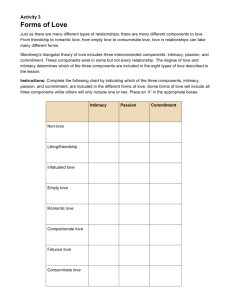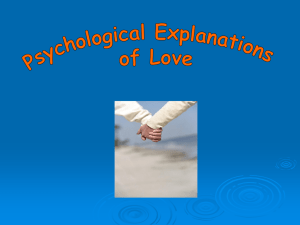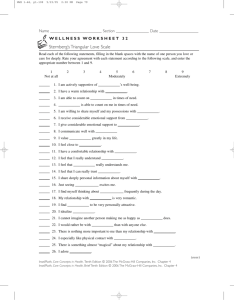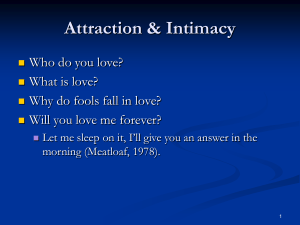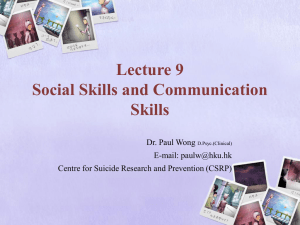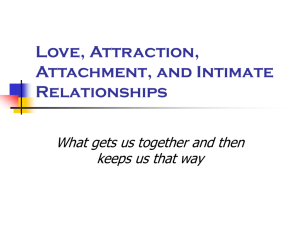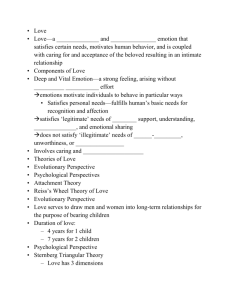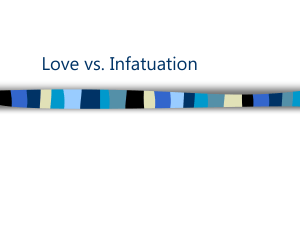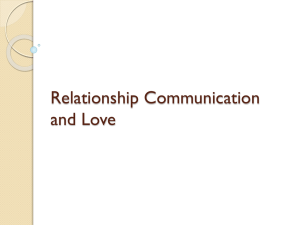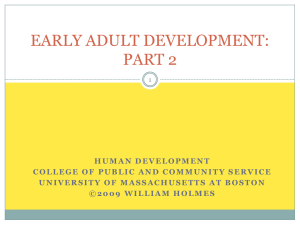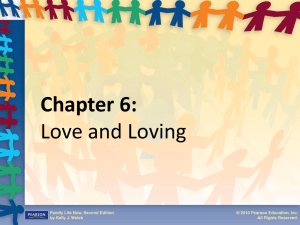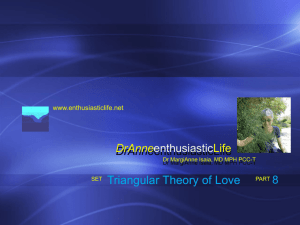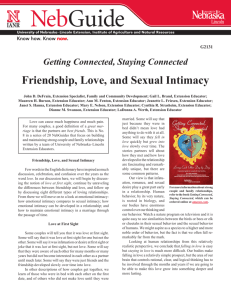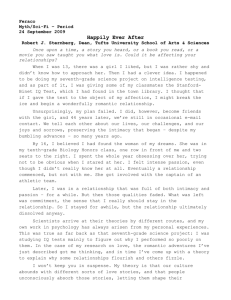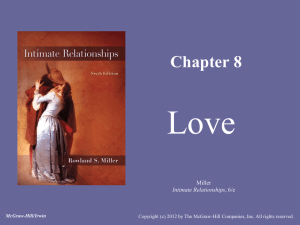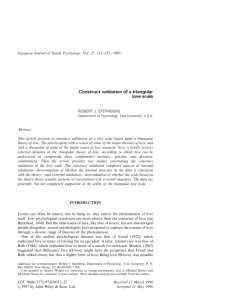Robert Sternberg's Triangular Theory of Love
advertisement
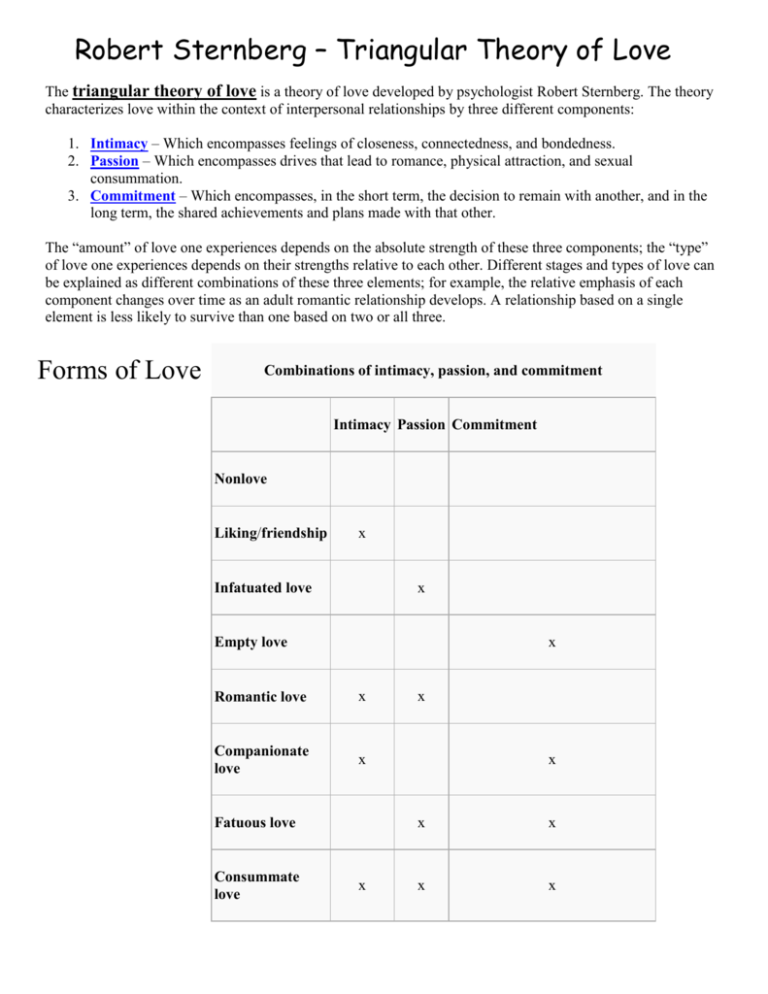
Robert Sternberg – Triangular Theory of Love The triangular theory of love is a theory of love developed by psychologist Robert Sternberg. The theory characterizes love within the context of interpersonal relationships by three different components: 1. Intimacy – Which encompasses feelings of closeness, connectedness, and bondedness. 2. Passion – Which encompasses drives that lead to romance, physical attraction, and sexual consummation. 3. Commitment – Which encompasses, in the short term, the decision to remain with another, and in the long term, the shared achievements and plans made with that other. The “amount” of love one experiences depends on the absolute strength of these three components; the “type” of love one experiences depends on their strengths relative to each other. Different stages and types of love can be explained as different combinations of these three elements; for example, the relative emphasis of each component changes over time as an adult romantic relationship develops. A relationship based on a single element is less likely to survive than one based on two or all three. Forms of Love Combinations of intimacy, passion, and commitment Intimacy Passion Commitment Nonlove Liking/friendship x x Infatuated love x Empty love Romantic love x Companionate love x Fatuous love Consummate love x x x x x x x Triangular Theory of Love – Expanded View Nonlove is the absence of all three of Sternberg's components of love. Liking/friendship in this case is not used in a trivial sense. Sternberg says that this intimate liking characterizes true friendships, in which a person feels a bondedness, a warmth, and a closeness with another but not intense passion or long-term commitment. Infatuated love is pure passion. Romantic relationships often start out as infatuated love and become romantic love as intimacy develops over time. However, without developing intimacy or commitment, infatuated love may disappear suddenly. Empty love is characterized by commitment without intimacy or passion. Sometimes, a stronger love deteriorates into empty love. In cultures in which arranged marriages are common, relationships often begin as empty love and develop into one of the other forms with the passing of time. Romantic love bonds individuals emotionally through intimacy and physically through passionate arousal. Companionate love is an intimate, non-passionate type of love that is stronger than friendship because of the element of long-term commitment. Sexual or physical desire is not an element of companionate love. This type of love is often found in marriages in which the passion has gone out of the relationship but a deep affection and commitment remain. The love ideally shared between family members is a form of companionate love, as is the love between close friends who have a platonic but strong friendship. Fatuous love can be exemplified by a whirlwind courtship and marriage in which a commitment is motivated largely by passion without the stabilizing influence of intimacy. Consummate love is the complete form of love, representing an ideal relationship toward which people strive. Of the seven varieties of love, consummate love is theorized to be that love associated with the “perfect couple”. According to Sternberg, such couples will continue to have great sex fifteen years or more into the relationship, they can not imagine themselves happy over the long term with anyone else, they weather their few storms gracefully, and each delight in the relationship with one other. However, Sternberg cautions that maintaining a consummate love may be even harder than achieving it. He stresses the importance of translating the components of love into action. "Without expression," he warns, "even the greatest of loves can die" (1987, p.341). Thus, consummate love may not be permanent. If passion is lost over time, it may change into companionate love.
